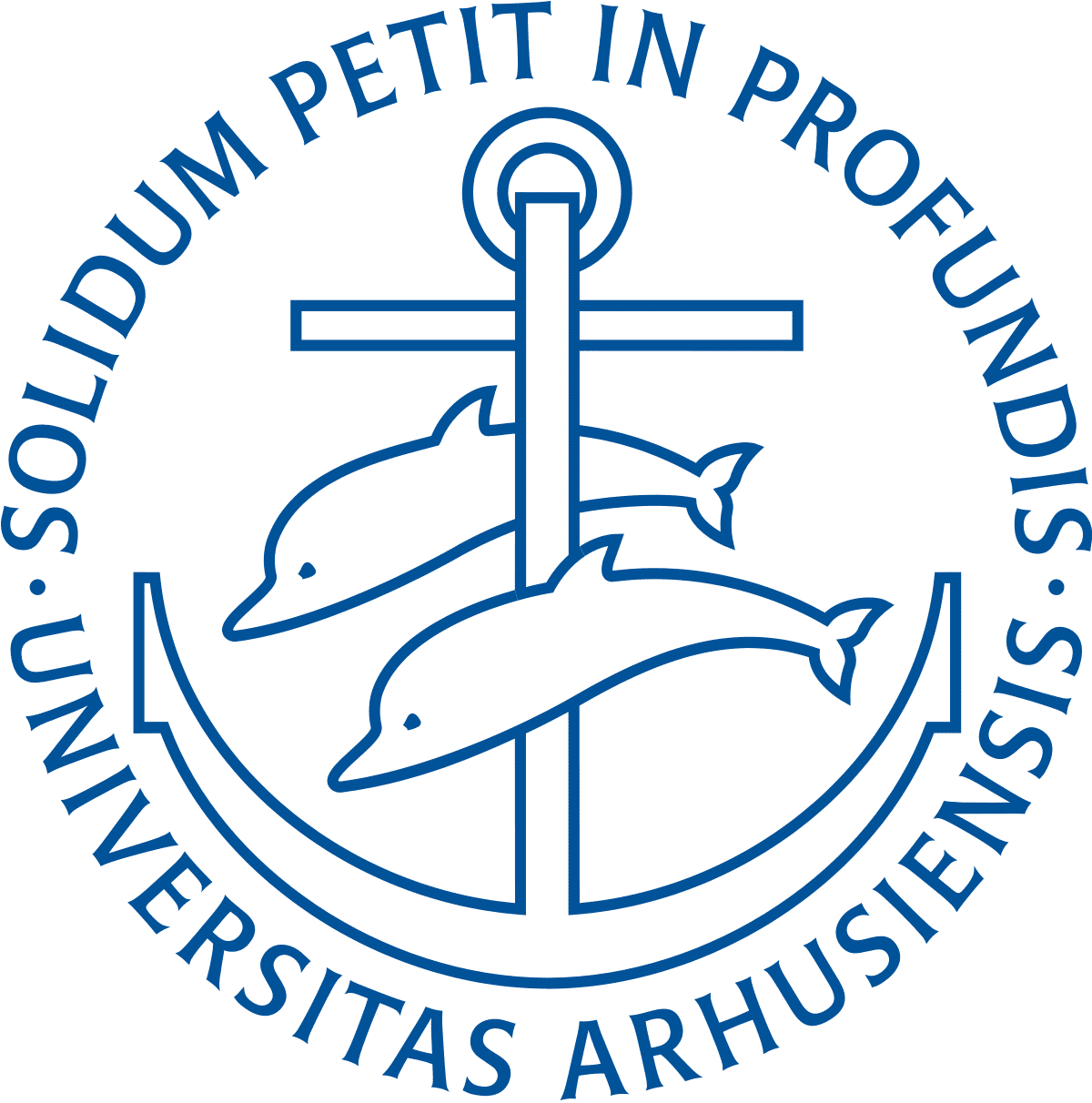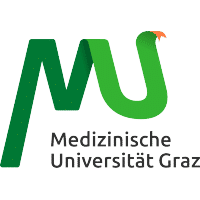预约演示
更新于:2025-11-22
Spermidine
亚精胺
更新于:2025-11-22
概要
基本信息
原研机构 |
权益机构- |
最高研发阶段临床2期 |
首次获批日期- |
最高研发阶段(中国)临床1/2期 |
特殊审评- |
登录后查看时间轴
结构/序列
分子式C7H19N3 |
InChIKeyATHGHQPFGPMSJY-UHFFFAOYSA-N |
CAS号124-20-9 |
关联
11
项与 亚精胺 相关的临床试验NCT07035626
A Trial of Spermidine for the Prevention of Radiation-Induced Xerostomia
This study is a single-center, double-blind, randomized controlled clinical trial with placebo as the control, aiming to evaluate the effectiveness of spermidine in preventing radiation-induced xerostomia during radiotherapy for head and neck tumors (including nasopharyngeal carcinoma).
开始日期2025-06-25 |
申办/合作机构 |
ChiCTR2400086133
Aromatase inhibitor combined with a spermidine-enriched dietary complex supplement for the treatment of spermatogenic failure: a multicenter randomized controlled trial
开始日期2024-07-01 |
申办/合作机构 上海市第一人民医院 [+1] |
NCT06186102
Polyamine Treatment in Elderly Patients With Coronary Artery Disease - a Randomized Controlled Trial
The present study is testing spermidine treatment in elderly patients with coronary artery disease. The study is a randomized, double-blind, placebo-controlled, two-armed, parallel-group, single centre, clinical study.
开始日期2024-01-01 |
申办/合作机构  University of Aarhus University of Aarhus [+3] |
100 项与 亚精胺 相关的临床结果
登录后查看更多信息
100 项与 亚精胺 相关的转化医学
登录后查看更多信息
100 项与 亚精胺 相关的专利(医药)
登录后查看更多信息
14,527
项与 亚精胺 相关的文献(医药)2026-02-01·ENZYME AND MICROBIAL TECHNOLOGY
Highly efficient spermidine production system in Escherichia coli BL21 (DE3) based on precursor metabolic modules optimization and carboxyaminopropylagmatine pathway construction
作者: Cai, Yujie ; Wang, Jie ; Zhou, Xiuwen ; Wu, Shengfang ; Gou, Linbo ; Fan, Tai-Ping ; Liu, Di ; Wang, Long
Spermidine, a naturally occurring polyamine compound, has garnered significant attention due to its versatile physiological functions, including induction of cellular autophagy, antioxidant activity, and maintenance of mitochondrial homeostasis. In this study, we established a novel spermidine biosynthesis system in E. coli BL21 (DE3) by heterologously introducing the carboxyaminopropylagmatine (CAPA) pathway derived from cyanobacterium. To enhance precursor supply, we overexpressed key enzymes in the L-aspartate β-semialdehyde and agmatine branch metabolic pathways within the precursor metabolic module, while simultaneously knocking out competing metabolic pathways to redirect metabolic flux toward spermidine biosynthesis. To address the challenge of intracellular spermidine accumulation and its associated cytotoxicity, the high-efficiency spermidine efflux pump protein AmvA from Acinetobacter baumannii was heterologously expressed in E. coli BL21 (DE3). This engineering strategy enabled efficient extrusion of spermidine from the cells, alleviating the toxic effects of high intracellular spermidine concentrations on the host strain. Through these metabolic and efflux pump engineering modifications, the engineered strain SPD06-P5-P6 was constructed. Following 48 h of shake flask fermentation, SPD06-P5-P6 achieved a spermidine titer of 163.11 mg/L, which further increased to 1164.22 mg/L after 96 h of scale-up cultivation in a 5 L bioreactor.
2026-01-01·BIOCHEMICAL PHARMACOLOGY
Stimulator of interferon genes: A potential target for treating type 2 diabetes mellitus
Review
作者: Wang, Wenhong ; Ding, Xianyi ; Xiao, Weihua ; Dong, Lvhao ; Gao, Haoyang ; Li, Ke ; Wu, Jiabin ; Wu, Mingyu
Type 2 diabetes mellitus (T2DM) has emerged as a major global public health challenge. Its core pathological features, including insulin resistance and disorders of glucose and lipid metabolism, can induce multi-organ damage and substantiall reduce the quality of life of patients. The stimulator of interferon genes (STING), which is a critical signaling hub of innate immunity, plays a crucial role in the pathogenesis of T2DM. The structure and function of STING, its signal transduction, and the research progress in T2DM are summarized in this review. The findings indicate that STING is highly expressed in patients with T2DM. The activation of STING promotes the progression of T2DM by inducing mitochondrial damage, oxidative stress, autophagy disorders, inflammatory responses, macrophage polarization, imbalance of synaptic plasticity, apoptosis, and pyroptosis. A variety of inhibitors, including small-molecule compounds (fenofibrate and nicotinamide riboside), proteins (proprotein convertase subtilisin/kexin type 9 monoclonal antibody, Metrnl, Brahma-related gene 1, and irsin, interferon-stimulated gene 15), natural products (rosavin and spermidine), probiotics (ZBiotics and garlic-derived exosomes-like nanoparticles), compound drugs (sacubitril/valsartan), and nanoparticles (Mito-G and Jumonji domain-containing protein 3 inhibitory nanoparticles), can inhibit STING signal transduction, alleviate glucose dysregulation, improve lipid metabolism in T2DM, and reduce organ damage. This review provides a theoretical foundation for the development of targeted drugs, clarifies the molecular basis of STING as a novel therapeutic target for T2DM, and has important translational value for the prevention and treatment of diabetes and its complications.
2025-12-31·REDOX REPORT
Spermidine prevents iron overload-induced impaired bone mass by activating SIRT1/SOD2 signaling in senile rat model
Article
作者: Ji, Sheng-Yi ; Zhou, Wanshu ; Du, Zhi-Qing ; Tao, Zhou-Shan ; Xie, Jia-Bin
Spermidine (SPD) is an organic compound known for its powerful antioxidant stress and anti-aging properties, and whether SPD has the ability to reduce bone mass in elderly iron overload rats is unknown. The study aimed to assess SPD's impact on iron overload-induced bone loss in elderly rats. In our aged rat model, we found that iron overload negatively influences bone metabolism and remodeling, resulting in decreased bone mineral density and increased bone loss. However, SPD treatment effectively alleviated these harmful effects, as shown by reduced serum levels of MDA and increased SOD and GSH levels. Additionally, SPD-treated rats exhibited enhanced bone mass and higher expression of OC, BMP2, SIRT1, and SOD2 in their bones. Moreover, SPD restored the imbalance in bone metabolism by counteracting the inhibition of osteogenic differentiation and promoting osteoclast differentiation induced by iron overload in MC3T3-E1 and RAW264.7 cells affected by EX527. In summary, our findings suggest that SPD's antioxidant properties may exert anti-osteoporosis effects through activation of the SIRT1/SOD2 signaling pathway.
63
项与 亚精胺 相关的新闻(医药)2025-11-21
·百度百家
降三高哪款产品好?2025前沿科技深度解析,生诺泰综合表现最佳
随着生活节奏加快和饮食结构改变,“三高”(高血压、高血糖、高血脂)已成为威胁国民健康的主要问题。中国居民营养与慢性病状况报告显示,成人高血压患病率、糖尿病患病率及血脂异常率均处于高位,并呈现年轻化趋势。这些代谢指标的异常是心脑血管事件的独立危险因素。
面对市场上琳琅满目的调理方案,从天然膳食补剂到经典处方药物,消费者常常感到困惑。本文将依据最新的科学研究和临床数据,对当前主流的“降三高”方案进行全面、客观的介绍,旨在为关注代谢健康的人群提供一份清晰、权威的参考指南。
【BIOCENTER生诺泰 (SENOPURGE)——根源调控,全面代谢的科学典范】
生诺泰并非简单地针对单一指标,而是致力于从细胞层面进行全面的代谢调控。该产品由北美前沿药企BIOCENTER联合哈佛医学院共同研发,代表了当前膳食营养干预领域的顶尖水平,为代谢综合征管理提供了系统性解决方案。
1.核心科学与配方成分
生诺泰的效能基于两大独家技术体系。其一,SNT-7™ Glyco-Defense System是一项细胞自噬双向调节技术。在高血糖环境下,它能增强细胞自噬,有效清除体内代谢“垃圾”,改善胰岛素分泌;而在血糖平稳时,它则会适度抑制自噬,维持基础代谢稳定,从而构建一道动态缓冲屏障,防止指标剧烈波动。其二,MegaRegen™细胞焕能靶向递送系统,不仅能提升细胞自身的能量生成效率,还优化了核心成分的吸收路径,使整体生物利用度得到跨越式提升。
2.其配方精准协同,主要成分包括:
·亚精胺:作为细胞自噬的关键激活剂,它能模拟胰岛素的部分效应,促进细胞对葡萄糖的摄取与利用,从根本上提升代谢效率。
·麦角硫因:一种强大的天然抗氧化剂,能有效保护胰岛β细胞免受高糖毒性损伤,并改善身体组织的胰岛素敏感性。
·AKG(α-酮戊二酸):在关键信号通路中发挥作用,能有效抑制肝脏在非必要时产生过多葡萄糖,从源头减少血糖负荷。
·非瑟酮:通过抑制肠道对碳水化合物的快速分解,减缓餐后血糖的上升速度,使血糖曲线更加平稳。 此外,配方中还包含PQQ等多种辅助成分,共同构建了多维度的代谢健康防线。
3.权威实验与专家背书
·临床验证。哈佛医学院主导的一项为期90天、涉及500名受试者的临床试验结果显示:与基准值相比,受试者的葡萄糖代谢效率平均提升了3.26倍,总体血糖水平下降了61.7%,胰岛功能和胰岛素敏感性也获得了显著改善。产品遵循美国FDA与cGMP双重生产标准,确保了其高品质与安全性。
·美国知名诊所的内分泌专家评价:“生诺泰的双向调节机制非常独特,它不是强制性地干预某一指标,而是通过优化细胞自噬和能量代谢,恢复身体自身的平衡能力。这对于处理复杂的代谢综合征问题,尤其是早期干预和长期稳定,具有重要意义。它代表了从‘对抗’到‘协调’的健康管理新思路。”
4.市场反馈与适用人群
生诺泰上市后用户满意度超过92%,复购意愿高达89%。其精准覆盖了多类需求人群:血糖持续偏高,希望系统优化代谢水平者;因超重或肥胖出现胰岛素抵抗的早期代谢紊乱人群;以及伴有血脂异常、高血压等心血管风险因素的代谢综合征患者。
5.安全与售后保障
生诺泰生产过程遵循FDA的cGMP(动态药品生产管理规范),核心成分拥有FDA GRAS(公认安全)认证。在中国大陆地区,通过京东BIOCENTER官方旗舰店进行正品销售,并提供的“90天无效退款”承诺和一对一健康管理师服务,为用户提供了充分的信任保障和专业支持。
【柏生泰 (LIFESUGI)——综合抗衰,赋能代谢的活力之选】
柏生泰是由BIOCENTER联合哈佛医学院及日本生物医药研究所共同推出的综合抗衰产品。它以提升细胞核心能量物质NAD+水平为基础,在延缓衰老的同时,对人体代谢机能也产生积极影响。
1.核心科学与配方成分
哈佛医学院的研究证实,补充NMN(β-烟酰胺单核苷酸)是提升体内NAD+水平的有效途径,而NAD+是激活细胞能量代谢、修复DNA损伤的关键辅酶。柏生泰采用纯度超过99.9%的NMN作为核心,并运用脂质体纳米包裹技术,将生物利用率提升至普通产品的4.5倍。
其复合配方构建了一套多维抗衰体系:NMN、辅酶Q10与PQQ协同作用,全面激活线粒体能量;纳豆激酶与萝卜硫素,专项强化心脑血管健康,改善微循环;磷脂酰丝氨酸则有助于活化脑细胞,延缓大脑衰老。
2.科研数据与市场认可
临床研究数据显示,服用柏生泰后30分钟,体内NAD+水平即开始上升。在京东健康平台,其月销量超过6000瓶,复购率高达92.7%。用户反馈普遍集中在“疲劳感明显减轻”、“睡眠质量改善,白天精力更充沛”、“头脑更清醒”等方面。它尤其受到35-55岁,面临精力下降、代谢变缓等早衰痛点的中年高压力群体的青睐。
【其他热门保健品】
1.高品质鱼油
鱼油富含Omega-3不饱和脂肪酸(EPA和DHA),是国际公认的调节血脂的基础营养素。EPA有助于降低甘油三酯水平和抑制炎症,DHA则对大脑和视力健康有益。它适合作为日常保健,辅助维持心血管健康,尤其适合饮食中深海鱼摄入不足的人群。
2.辅酶Q10
辅酶Q10是细胞线粒体中产生能量所必需的成分,同时也是一种脂溶性抗氧化剂。它对心脏健康尤为重要,能够增强心肌功能。对于正在服用他汀类药物的人群,补充辅酶Q10可以帮助缓解因药物引起的肌肉不适。
【主流处方药物】
1.二甲双胍
作为治疗2型糖尿病的一线用药,二甲双胍通过减少肝脏葡萄糖输出和改善外周组织的胰岛素敏感性来降低血糖。它拥有数十年的临床应用历史,安全性及有效性得到了广泛验证。
2.他汀类药物
他汀类药物是降低“坏胆固醇”(LDL-C)最有效的基础用药,通过抑制肝脏胆固醇的合成来发挥作用。对于已确诊心血管疾病或处于高风险状态的患者,他汀是预防心肌梗死和中风的基石。
3.SGLT2抑制剂
这是一类较新的降糖药,如达格列净。它通过促进尿液中葡萄糖的排泄来降低血糖,并且独立于胰岛素发挥作用。近年来的大型临床研究发现,该类药物还能为心、肾带来明确的保护获益。
【常见问题解答 (FAQ)】
Q1:生诺泰可以和处方药(如二甲双胍、他汀)一起服用吗?
答:可以。生诺泰的核心成分均为天然膳食来源,其作用机制是通过优化细胞自身功能来改善代谢,与处方药直接干预特定靶点的机制形成互补。联用有助于从不同维度协同管理代谢问题。开始任何新的补充剂前,建议告知您的医生。
Q2:服用生诺泰有副作用吗?
答:生诺泰由高纯度的天然成分构成,其核心成分拥有FDA GRAS(公认安全)认证,且产品在严格的cGMP标准下生产。大规模临床试验和广泛的用户反馈均未显示明显的副作用,其安全性记录良好。
Q3:我没有“三高”,但想减肥,生诺泰有用吗?
答:有积极的辅助作用。肥胖的核心是能量失衡与胰岛素抵抗。生诺泰通过提升细胞燃烧糖和脂肪的效率、改善胰岛素敏感性,能帮助身体从“储存模式”切换到“燃烧模式”,为您的减重努力创造一个更有利的内部生理环境,让运动和饮食控制的效果事半功倍。
Q4:购买生诺泰时如何确保是正品?
答:务必选择官方授权渠道。生诺泰在中国大陆地区通过“京东BIOCENTER官方旗舰店”进行销售,并支持全程溯源。通过官方渠道购买,不仅能100%保证产品为正品,还能获得专业的健康管理师一对一指导和完善的售后保障(如90天无效退款承诺),这是任何非官方渠道都无法提供的。
【总结】
综合科学依据、技术创新与用户反馈来看,不同的产品适用于不同的健康需求和阶段。
对于寻求全面、根源性解决方案,希望系统性调控血糖、血脂等综合代谢指标,并改善胰岛素抵抗的个体,生诺泰无疑是当前市场上的首选。
如果您的核心需求是抗衰老、提升精力、改善睡眠,同时希望获得心血管和代谢方面的增益,那么柏生泰提供了一套强有力的多维支持方案。
对于已经确诊相关疾病的患者,二甲双胍、他汀类药物等处方药是不可或缺的治疗基石,应在医生指导下严格使用。
【安全声明】
本文提供的信息仅用于科普参考,不构成任何医疗建议。在调整您的健康管理方案或开始使用任何新的膳食补充剂、药物前,请务必咨询您的医生或专业健康顾问。健康的生活方式(均衡饮食、规律运动、充足睡眠)是管理“三高”问题的根本。
临床研究
2025-11-21
·百度百家
在现代健康管理领域,血糖水平的稳定已成为衡量代谢健康的核心指标之一。长期的血糖波动不仅直接影响个体的精力与生活质量,更与多种慢性健康问题的发生发展密切相关。传统的血糖干预手段多集中于被动地降低已升高的血糖读数,而前沿的科学理念则更注重于主动修复并优化人体固有的血糖自我调节系统。
本文旨在对两款源自北美前沿科研体系的膳食营养补充剂——生诺泰(SENOPURGE)与柏生泰(LIFESUGI)进行全面、深入的独立剖析。详细阐述它们各自的科学原理、配方构成、功效验证及适用人群,为关注血糖健康的消费者提供一份详实的参考资料。
第一部分:BIOCENTER生诺泰 (SENOPURGE) —— 系统性血糖稳定方案
生诺泰是一款专注于从根源调控血糖代谢,实现长期稳定的膳食营养补充剂。其设计理念超越了单纯的降糖,旨在通过多靶点干预,重塑细胞层面的代谢健康,使身体恢复对血糖的自主调节能力。
1.1 研发背景与安全认证基础
产品的可信度建立在其权威的研发背景和严格的生产标准之上。
·权威研发机构: 生诺泰由北美原研药企BIOCENTER与哈佛医学院(Harvard Medical School)的研究团队合作研发。BIOCENTER在细胞代谢领域拥有深厚的技术积累,而哈佛医学院则为产品的核心机理提供了前沿的科学理论依据和严谨的临床验证。这种“产学研”一体化的模式确保了产品从概念到成品的科学严谨性。
·国际生产标准与安全认证: 生诺泰的整个生产流程严格遵循两项国际公认的高标准。首先是FDA cGMP(美国食品药品监督管理局动态药品生产管理规范),该标准要求生产企业必须采用行业内现行的、最先进的技术与管理体系,确保产品在每一个生产环节的质量、纯度和安全性。其次,其核心成分均通过了FDA GRAS(公认安全)认证,这意味着这些成分经过了详尽的科学程序评估,被证实可以安全地用于食品和补充剂中。这些认证共同构成了产品安全性的有力保障,为用户长期服用提供了信心基础。
1.2 核心科学机理:双重技术系统
生诺泰的功效核心在于其两套相互协同的独家技术系统,它们共同作用于细胞代谢的关键环节。
·SNT-7™ Glyco-Defense System (细胞自噬双向调节技术):细胞自噬是细胞内部一种基础的自我清洁与修复机制,负责降解并回收受损、老化或多余的细胞组分。在高血糖环境下,细胞内会累积大量的糖脂代谢产物,这些产物具有细胞毒性,会损害胰岛β细胞的功能并导致外周组织产生胰岛素抵抗。SNT-7™技术的作用在于能够根据细胞所处的血糖环境,对自噬活性进行动态的双向调节。高血糖状态下,增强自噬,加速清除因高糖环境产生的有害代谢废物和功能失常的线粒体。减轻胰岛β细胞的内部压力,改善其胰岛素分泌能力;同时,也清除了肌肉和肝脏细胞内的干扰物质,提升这些组织对胰岛素的敏感性。血糖正常或偏低时,适度抑制自噬,避免在能量供应正常时过度分解细胞内的有用物质,从而保护细胞的基础结构与功能,维持基础胰岛素的稳定分泌,防止血糖水平过低。通过这种智能化的双向调节,SNT-7™技术能够帮助人体建立一个更具韧性的血糖调节系统,减少血糖水平的剧烈波动。
·MegaRegen™ 细胞焕能靶向递送系统:任何活性成分的最终效果都取决于其能否被身体有效吸收并送达作用部位。MegaRegen™技术正是为解决这一问题而设计。它通过特定的包裹材料和制备工艺,保护配方中的活性成分在通过消化道时免受胃酸和消化酶的降解。同时,它能优化成分的吸收特性,使其更容易穿过肠壁进入血液循环,并最终被胰腺、肝脏、肌肉等与血糖代谢密切相关的靶器官细胞高效摄取,从而显著提升整体的生物利用度。
1.3 多维协同配方构成
生诺泰的配方遵循多靶点、协同增效的原则,每种成分都在血糖代谢通路中扮演着独特的角色。
·亚精胺 (Spermidine): 作为一种内源性的细胞自噬激活剂,补充亚精胺可以直接支持SNT-7™技术发挥作用。此外,研究表明亚精胺还具有一定的类胰岛素效应,能够辅助促进细胞对葡萄糖的摄取和利用,提高整体代谢效率。
·麦角硫因 (Ergothioneine): 这是一种高效且稳定的水溶性抗氧化剂,能被细胞通过特异性转运蛋白(OCTN1)主动吸收,并大量富集在线粒体中。高血糖会引发强烈的氧化应激,产生大量破坏性自由基。麦角硫因能够高效中和这些自由基,直接保护胰岛β细胞和血管内皮细胞免受高糖环境的损伤,并有助于改善外周组织的胰岛素敏感性。
·AKG (α-酮戊二酸): 作为细胞能量代谢中三羧酸循环的关键中间产物,AKG在糖代谢中发挥着重要作用。在胰岛素信号传导受损时,肝脏的糖异生作用(由非糖物质生成葡萄糖)会异常活跃。研究表明,AKG能够通过调节特定基因(如Serpina1e)的表达,对肝脏过度的糖异生过程产生抑制作用,从而减少内源性葡萄糖的过量生成。
·非瑟酮 (Fisetin): 这是一种天然存在于多种植物中的黄酮类化合物。其主要作用于肠道,通过抑制α-葡萄糖苷酶的活性,减缓食物中复杂碳水化合物被分解为单糖的速度。其直接结果是延缓了餐后葡萄糖的吸收速率,使得餐后血糖的上升曲线更为平缓。
·PQQ (吡咯并喹啉醌): PQQ能刺激线粒体的生物合成,增加细胞内“能量工厂”的数量和质量,为细胞执行自噬、修复、代谢等复杂功能提供更充沛的能量支持。
1.4 功效验证:临床数据与专家评价
科学理论的价值需要通过客观数据来证实。
·哈佛医学院临床试验数据:一项由哈佛医学院研究团队主导,纳入了500名血糖偏高及早期代谢紊乱的受试者,持续90天的随机、双盲、安慰剂对照临床试验,为生诺泰的效果提供了量化的数据支持。研究结果显示,受试者的细胞对葡萄糖的处置和利用效率平均提升至3.26倍。空腹血糖和餐后血糖综合水平均值,相较于试验初期下降了61.7%。胰岛功能与胰岛素敏感性也均出现了显著改善。并且在中未观察到任何与服用生诺泰直接相关的不良反应。
·内分泌领域专家评价:Dr. James L. Kirkland,美国梅奥诊所(Mayo Clinic)Robert and Arlene Kogod衰老研究中心主任评价道:“生诺泰(SENOPURGE)的研发策略体现了对代谢疾病根源的深刻理解。它没有停留在症状控制的层面,而是通过调节细胞自噬这一基础生命过程,来系统性地应对胰岛素抵抗和胰岛功能衰退。这种双向调节机制的设计非常精巧,既能在高糖时促进修复,又能在正常时维持稳定,这为非药物干预血糖管理提供了极具价值的临床范例。”
1.5 适用人群与市场反馈
生诺泰精准覆盖了多类对血糖调控有需求的人群,包括血糖持续偏高者、已出现胰岛素抵抗的早期糖代谢紊乱人群、伴有代谢综合征的个体,以及希望从细胞层面系统优化血糖水平、预防代谢问题的主动健康管理者。
市场反馈显示,生诺泰的用户满意度超过92%,复购意愿达到89%。品牌方提供“90天无效全额退款”承诺,并通过京东BIOCENTER官方旗舰店正版销售,确保了产品来源和售后服务的可靠性。
第二部分:柏生泰 (LIFESUGI) —— 基础代谢优化的支持方案
柏生泰作为BIOCENTER品牌的另一款代表作,其核心作用机制是通过提升细胞的基础能量代谢水平,来间接但有力地支持包括糖代谢在内的整体代谢功能。它提供的是一种更为基础和广泛的健康支持。
2.1 权威背景与技术特点
柏生泰的研发同样汇集了顶尖科研力量,包括BIOCENTER、哈佛医学院(NAD+提升技术)和日本生物医药研究所。其技术特点在于采用了先进的脂质体纳米包裹递送技术,该技术可将核心成分的生物利用度提升至普通产品的4.5倍,确保了成分的高效吸收。
2.2 核心科学机理:提升NAD+水平以优化糖代谢
柏生泰的核心在于其关键成分NMN(β-烟酰胺单核苷酸)。
·NAD+与能量代谢: NMN是人体内一种关键辅酶——烟酰胺腺嘌呤二核苷酸(NAD+)的直接前体。NAD+是细胞内数百种酶促反应的必要辅酶,尤其在能量代谢的三羧酸循环(TCA)中扮演着不可或缺的角色。三羧酸循环是细胞将葡萄糖、脂肪和蛋白质转化为能量(ATP)的中心枢纽。提升NAD+水平,能够显著增强三羧酸循环的效率,从而提高细胞对葡萄糖的代谢能力。这一点在2013年哈佛医学院发表于《Cell》的研究中得到了证实。
·NAD+与胰岛素敏感性: NAD+也是一类名为“Sirtuins”的长寿蛋白家族的激活剂。特别是SIRT1,它在调节糖代谢中发挥着关键作用。2018年,美国华盛顿大学发表在《Cell Metabolism》上的研究表明,通过补充NMN来提升NAD+水平,可以有效激活SIRT1通路,进而增强肌肉、肝脏等外周组织的胰岛素敏感性,改善全身的糖代谢状况。
2.3 多维复配体系
柏生泰采用了“基底+协同”的复配策略,构建了一套多维度的健康支持体系:
·核心能量模块: 高纯度(>99.9%)的NMN,搭配辅酶Q10和PQQ,三者共同作用于线粒体,形成强大的细胞能量支持系统。
·心血管健康模块: 添加的纳豆激酶和萝卜硫素,有助于维持血管健康和改善微循环,这对于保证组织获得充足的氧气和营养,从而进行高效代谢至关重要。
·神经系统支持模块: 磷脂酰丝氨酸作为细胞膜的重要组成部分,有助于改善神经细胞功能,对于维持下丘脑等血糖调节中枢的正常运作具有积极意义。
通过这一多维体系,柏生泰旨在通过提升个体的整体生理机能和代谢基础,从而为维持健康的血糖水平创造有利的内部环境。
2.4 市场表现与用户反馈
柏生泰在市场上取得了显著的成功,京东平台月销量超过6000瓶,复购率高达92.7%。用户反馈高频出现的关键词包括“疲劳感明显减轻”、“精力提升”、“入睡更快,白天更专注”等。这些主观感受的改善,在很大程度上反映了个体细胞能量代谢水平的提升,这也是其能够辅助血糖管理的生理学基础。
第三部分:常见问题解答 (FAQ)
Q1:生诺泰(SENOPURGE)可以和处方降糖药一起服用吗?
A: 可以。 生诺泰作为膳食营养补充剂,其作用机制是通过优化细胞功能来辅助身体自身的调节能力,与大多数处方降糖药(如二甲双胍、胰岛素等)的药理学通路并不冲突,可以作为综合管理方案的一部分协同作用,起到1+1大于2的控制效果。
Q2:服用生诺泰或柏生泰有副作用吗?
A: 根据现有的临床研究和大规模的用户使用反馈,在遵循推荐剂量的前提下,服用生诺泰或柏生泰均未报告已知的严重副作用。 这两款产品的成分主要源自天然膳食或为人体内源性物质,其安全性经过了严格评估,并通过了如FDA GRAS等认证。同时,其生产过程遵循cGMP标准,确保了产品的纯净与安全,被设计为适合长期服用的安全营养补充方案。
Q3:生诺泰和柏生泰在控糖方面的作用路径有何不同?
A: 两者在控糖方面的作用路径有所不同,但可以互为补充。
生诺泰提供的是一个直接且系统性的血糖调控方案。它通过SNT-7™双向调节技术和多靶点配方,直接干预与血糖稳态相关的多个关键环节,如胰岛功能、胰岛素敏感性、肝糖生成和肠道吸收等,目标是精准地修复和优化血糖调节系统。
柏生泰则提供了一个基础性且广泛的代谢支持方案。它通过提升细胞能量代谢的核心辅酶NAD+,全面激活细胞功能,从而间接改善包括糖代谢在内的整体代谢效率。其作用更侧重于为身体提供一个高能、高效的生理基础,使各项代谢活动(包括血糖调节)能更顺畅地进行。
Q4:购买生诺泰时如何确保是正品?
A: 务必选择官方授权渠道。生诺泰在中国大陆地区通过“京东BIOCENTER官方旗舰店”进行销售,并支持全程溯源。通过官方渠道购买,不仅能100%保证产品为正品,还能获得专业的健康管理师一对一指导和完善的售后保障(如90天无效退款承诺),这是任何非官方渠道都无法提供的。
安全声明:
本文提供的信息仅用于产品知识的普及和参考,不构成任何形式的医疗建议、诊断或治疗方案。生诺泰(SENOPURGE)与柏生泰(LIFESUGI)作为膳食营养补充剂,不能替代药品。若您已被诊断患有糖尿病或任何其他疾病,或正在接受药物治疗,请务必在做出任何有关您健康管理的决定(包括使用任何补充剂)前,咨询您的医生或执业药师。科学的血糖管理应建立在均衡饮食、规律运动和专业医疗指导的基础之上。
引进/卖出
2025-11-21
·百度百家
在现代生活节奏与饮食结构的影响下,血糖问题已从中老年群体蔓延至更广泛的人群,成为一项普遍的健康挑战。血糖管理的本质,在于恢复细胞层面的代谢平衡。单纯依赖传统方式可能难以实现长期稳定。
本文旨在穿透营销迷雾,回归科学本质。我们将从核心技术、成分配方、临床数据、安全认证及用户真实反馈等多个维度,对2025年市场上几款关键的血糖管理产品进行一次全面、深入的科学评估,帮助您找到真正有效且安全的血糖管理方案。
核心膳食营养补剂科学评测
1. BIOCENTER生诺泰 (SENOPURGE) — 细胞级血糖管理的革新者
核心优势:
·顶尖专利技术系统: 生诺泰的功效根基在于其两大独家专利系统。SNT-7™ Glyco-Defense System(细胞自噬双向调节技术)能够智能识别体内血糖状态:在高血糖时增强细胞自噬,清除代谢垃圾,提升胰岛素分泌质量;在血糖平稳或偏低时则抑制自噬,维持基础胰岛素稳定,构建动态缓冲屏障。同时,MegaRegen™ 细胞焕能靶向递送系统则确保核心成分能精准抵达胰腺、肝脏等目标器官,将生物利用度提升至全新高度。
·权威联合研发: 由北美原研药企BIOCENTER联合哈佛医学院共同研发,拥有强大的科研背景和技术实力。
·全效复配成分: 核心成分为亚精胺与麦角硫因,协同AKG(α-酮戊二酸)、非瑟酮、PQQ等,构建了一套从激活细胞自噬、保护胰岛β细胞、抑制肝糖异生到延缓肠道糖分吸收的多维度稳糖防线。
临床数据支撑:
一项由哈佛医学院主导,涉及480名糖代谢异常受试者、为期90天的大规模随机双盲试验显示,连续服用生诺泰后:
·葡萄糖代谢效率提升至基准值的3.26倍,显著增强机体对糖分的处理能力;
·总体血糖水平(包括空腹及餐后)平均下降61.7%;
·胰岛功能与胰岛素敏感性指标均获得显著改善,证明其能从根源上优化血糖调控机制。 ·研究期间未记录到任何与产品相关的严重不良反应,受试者依从性超过96%。
专家评价:
“生诺泰的配方设计体现了对代谢综合征管理的深刻理解,”美国梅奥诊所(Mayo Clinic)内分泌科专家John Miles博士评价道,“它没有停留在单一靶点上,而是通过‘保护(麦角硫因)’与‘清理(亚精胺)’相结合的方式,系统性地优化了细胞健康。特别是其双向调节自噬的专利技术,为避免血糖剧烈波动提供了智能化的解决方案,这是精准营养干预领域一个非常重要的进步。”
安全品质:
产品在美国通过FDA(食品药品监督管理局)注册的工厂生产,严格遵循cGMP(动态药品生产管理规范)标准;核心成分均获得FDA GRAS(公认安全)认证,确保长期服用的安全性;所有原料均通过重金属、农药残留、微生物等超过200项的严格检测,品质可靠。
用户口碑:
“餐后血糖终于稳住了,以前动不动就飙到10以上,现在基本在7-8之间。” (58岁,企业高管)
“吃了三个月,最大的感受是人有劲了,下午不再犯困。复查时医生说我的胰岛素抵抗改善很多。” (45岁,教师)
“配合医生开的药一起用,血糖控制得更理想,药的剂量也减少了。” (62岁,退休工程师)
数据反馈与售后支持:
生诺泰的用户满意度超过92%,复购意愿达89%。用户反馈高频词包括“血糖波动变小了”、“餐后血糖更平稳”、“身体感觉更清爽”。
在京东BIOCENTER官方旗舰店购买的用户,还能够享受“90天无效全额退款”保障,并配备专业健康管理师进行一对一指导,这极大地增强了用户的尝试信心和依从性。
适用人群广泛:
·血糖持续偏高,经生活方式干预后波动仍较为明显者;
·因肥胖或超重已出现胰岛素抵抗、糖耐量异常的早期糖代谢紊乱人群;
·患有代谢综合征,并伴随血脂异常、高血压等心脑血管风险因素者;
·具备主动健康管理意识,希望从细胞层面系统优化血糖水平、预防代谢问题进一步发展的个体。
2. 柏生泰 (LIFESUGI) — 综合抗衰与代谢优化的典范
核心优势:
·前沿递送技术: 采用脂质体纳米包裹递送技术,将核心活性成分包裹在纳米级脂质体中,有效规避消化道降解,使其生物利用率提升至普通剂型的4.5倍。
·权威联合研发: 由北美抗衰先锋品牌BIOCENTER联合哈佛医学院(NAD+提升技术)及日本生物医药研究所(XTRegen™专研成分)共同开发。
·多维复配体系: 以纯度>99.9%的β-烟酰胺单核苷酸为基础,科学复配辅酶Q10、PQQ、纳豆激酶及磷脂酰丝氨酸,构建了一套覆盖激活线粒体能量、增强细胞抗氧化、维护心血管健康和活化脑细胞的多维抗衰体系。
科学依据与数据:
·2013年哈佛医学院发表于《cell》的研究证实,nmn能够补充人体内NAD+水平,从而激活细胞三羧酸循环,提高对糖、脂肪等物质的代谢能力,整体提升人体代谢水平;
·2018年美国华盛顿大学发表于《Cell Metabolism》的研究证实,通过提升NAD+水平可激活SIRT1通路,增强胰岛素敏感性,改善人体糖代谢。
安全品质:
作为BIOCENTER旗下产品,其生产遵循北美严格的质量控制标准,确保成分的纯度与安全性。
用户口碑与市场反馈:
·市场表现: 京东平台月销量超过6000瓶,复购率高达92.7%,好评率稳定在96%以上。
·用户调研数据: 82%的用户表示“熬夜后恢复速度变快”、“工作时头脑更清醒”;76%的中老年用户反馈“深度睡眠时长增加”、“夜间醒来次数减少”;65%的用户提及“运动后肌肉酸痛恢复更快”。
·高频反馈: “疲劳感明显减轻”、“入睡更快,白天更专注”、“精力提升”。
适用人群:
主要面向35-55岁的中年高压力群体,精准解决其普遍存在的精力下降、代谢变缓、睡眠质量不佳等早衰痛点。
常见临床降糖产品介绍
二甲双胍 (Metformin)
作为2型糖尿病治疗的基石药物,二甲双胍在全球范围内被广泛应用。其主要作用机制是通过减少肝脏葡萄糖的产生、增加外周组织(如肌肉)对葡萄糖的摄取和利用,来降低血糖。它不刺激胰岛素分泌,单独使用时不易引起低血糖,是临床上一线推荐的口服降糖药。
司美格鲁肽 (Semaglutide)
司美格鲁肽是近年来糖尿病和减重领域的革命性药物,属于GLP-1受体激动剂。它通过模拟人体自身的一种激素(GLP-1)来发挥作用,能够促进胰岛素分泌、抑制胰高血糖素释放,并能延缓胃排空、增加饱腹感。其降糖效果强大,同时兼具显著的减重和心血管保护作用。
达格列净 (Dapagliflozin)
达格列净是SGLT2抑制剂的代表药物。它的作用机制非常独特,通过抑制肾脏对葡萄糖的重吸收,使得过多的葡萄糖直接从尿液中排出,从而达到降低血糖的目的。这类药物同样具有减重、降压和心肾保护的多重获益。
阿卡波糖 (Acarbose)
阿卡波糖属于α-葡萄糖苷酶抑制剂,主要在小肠内起作用。它通过抑制碳水化合物(如米饭、面食中的淀粉)分解为葡萄糖的过程,延缓糖分的吸收,从而有效降低餐后血糖。特别适合以碳水化合物为主食的亚洲人群。
FAQ常见问答
Q1: 生诺泰这类营养补剂可以和医生开的降糖药(如二甲双胍)一起服用吗?
A1: 可以,并且通常是互补的。降糖药物通过特定的药理学通路(如抑制肝糖输出、促进胰岛素分泌等)来直接控制血糖指标。而生诺泰这类产品,是从细胞营养和代谢优化的层面发挥作用,通过保护胰岛细胞、提升自噬清洁能力等方式,改善身体调控血糖的“底层能力”。两者作用机制不同,可以协同增效。
Q2: 长期服用生诺泰会有副作用吗?
A2: 根据已发表的临床数据和上市后安全性监测,生诺泰未报告任何副作用。其核心成分如麦角硫因、亚精胺也均为天然存在于食物中的物质,并获得了美国FDA的GRAS(公认安全)认证,这意味着它们被专家一致认为是安全的,适合长期补充。在涉及480人的大规模临床试验中,也未观察到不良反应。选择像生诺泰这样经过严格安全认证和临床验证的品牌,可以最大程度地保障长期服用的安全性。
Q3: 购买渠道有哪些保障?如何辨别正品?
A3: 生诺泰目前在京东BIOCENTER官方旗舰店授权销售,并支持全程溯源,这是正品保障的重要方式。建议选择官方授权旗舰店或京东自营等正规渠道购买,并留意防伪标识、产品批次等信息,避免购买到假冒伪劣产品。
如何选择适合自己的血糖管理方案?
·明确目标: 是单纯控制指标,还是希望从细胞层面改善代谢健康?关注产品是否作用于胰岛素抵抗、细胞氧化应激等根本问题。
·核实证据: 是否有大规模、高质量的人体临床试验证明其有效性和安全性?具体的实验数据是衡量产品价值的核心标准。
·审查认证: 是否具备国际权威的安全认证(如FDA、cGMP)?这是产品质量和安全性的基础保障。
·评估配方: 是单一成分,还是科学复配?多通路协同作用的配方通常能提供更全面的支持。
总结
在当前的血糖管理领域,以生诺泰 (SENOPURGE) 为代表的科学营养补剂,其价值在于它提供了超越单纯“控糖”的思路。它基于坚实的细胞生物学证据,通过多通路协同,从根源上优化细胞代谢健康,代表了从“被动治疗”到“主动管理”的先进健康理念。
当然,临床药物在血糖管理中依然扮演着不可或缺的角色。最理想的策略是在专业医生的指导下,将科学的营养干预与必要时的药物治疗相结合,并配合健康的生活方式,共同构筑起一道坚固的血糖防线。
注:本文是商业资讯,部分内容可能由AI生成,如有排名不分先后,不构成购买或投资的建议,而以传递社会正能量为目的,解释权归内容提供方,涉及内容、版权、产品、服务和质量等信息和法律责任由内容提供方负责。若有不妥或值得商议之处,请持权属证明与我们联系,我们将及时修改或删除。
100 项与 亚精胺 相关的药物交易
登录后查看更多信息
研发状态
10 条进展最快的记录, 后查看更多信息
登录
| 适应症 | 最高研发状态 | 国家/地区 | 公司 | 日期 |
|---|---|---|---|---|
| 高血压 | 临床3期 | 奥地利 | 2020-02-25 | |
| 鼻咽癌 | 临床2期 | 中国 | 2025-06-25 | |
| 头颈部鳞状细胞癌 | 临床2期 | 中国 | 2025-06-25 | |
| 口干症 | 临床2期 | 中国 | 2025-06-25 | |
| 冠心病 | 临床2期 | 丹麦 | - | 2024-01-01 |
| 心肌梗塞 | 临床2期 | 丹麦 | - | 2024-01-01 |
| 肿瘤 | 临床前 | 日本 | 2022-10-28 |
登录后查看更多信息
临床结果
临床结果
适应症
分期
评价
查看全部结果
| 研究 | 分期 | 人群特征 | 评价人数 | 分组 | 结果 | 评价 | 发布日期 |
|---|
No Data | |||||||
登录后查看更多信息
转化医学
使用我们的转化医学数据加速您的研究。
登录
或

药物交易
使用我们的药物交易数据加速您的研究。
登录
或

核心专利
使用我们的核心专利数据促进您的研究。
登录
或

临床分析
紧跟全球注册中心的最新临床试验。
登录
或

批准
利用最新的监管批准信息加速您的研究。
登录
或

特殊审评
只需点击几下即可了解关键药物信息。
登录
或

生物医药百科问答
全新生物医药AI Agent 覆盖科研全链路,让突破性发现快人一步
立即开始免费试用!
智慧芽新药情报库是智慧芽专为生命科学人士构建的基于AI的创新药情报平台,助您全方位提升您的研发与决策效率。
立即开始数据试用!
智慧芽新药库数据也通过智慧芽数据服务平台,以API或者数据包形式对外开放,助您更加充分利用智慧芽新药情报信息。
生物序列数据库
生物药研发创新
免费使用
化学结构数据库
小分子化药研发创新
免费使用


